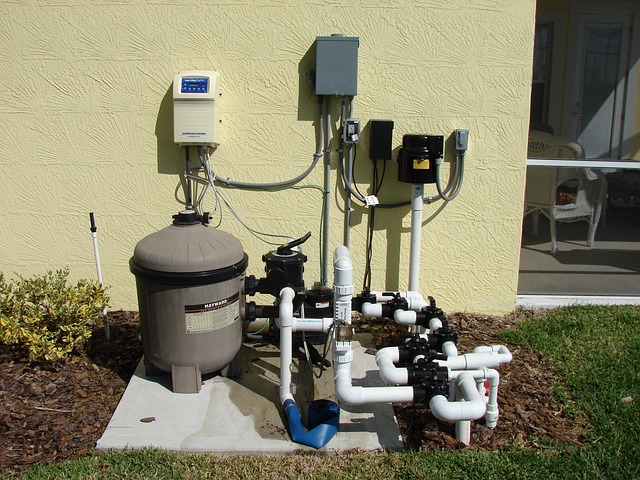Basic homeowner techniques to locate common duct leaks without specialized gear
Locating duct leaks can improve comfort and reduce energy waste. This article outlines straightforward, non-technical methods homeowners can use to find common leaks in ductwork using everyday items. These checks complement routine maintenance and help you decide when to call pro local services.

Duct leaks can reduce heating efficiency, create uneven temperatures, and sometimes affect indoor air quality. A homeowner can identify many common problems without specialized gear by combining simple visual inspections, basic airflow checks, and household tools. Regular maintenance and inspection of furnace or boiler venting, filters, and thermostat controls improves system performance and can reveal clues that point to ductwork breaches or disconnected vents.
How can I check ductwork for visible damage?
Start with a visual inspection in accessible areas: the attic, crawlspace, basement, and utility closet. Look for disconnected seams, crushed or flattened flexible ducts, and gaps around registers and plenums. Follow ducts from the furnace or boiler supply and return plenum as far as practical; tape gaps may have degraded and mastic may be missing. Pay attention to dust streaks or insulation that’s unusually dirty near joints—those streaks often indicate air being pulled out or pushed through a leak. If ducts run through unconditioned spaces, check for damage from rodents or stored items.
How do filters and airflow affect leak detection?
Filters and airflow patterns can offer indirect clues. A heavily clogged filter reduces overall airflow and may make a leaky duct more obvious because rooms far from the air handler will feel weaker. With a clean filter, carefully place your hand near supply registers while the system runs; strong, steady airflow suggests a sealed path, while weak or inconsistent airflow can point to leaks or obstructions upstream. Also compare register airflow between rooms—large differences often mean either blocked vents or leaks in the supply trunk leading to certain branches.
Can my furnace or boiler signs indicate duct leaks?
Furnace or boiler performance indicators can hint at duct issues. If the furnace cycles frequently, the thermostat and sensors may register rapid temperature swings caused by conditioned air escaping through ducts. For boilers that feed hydronic heating with air handlers, uneven heat distribution can similarly signal airflow loss through ductwork. Pay attention to unusual noises near the air handler, increased energy use on utility bills without a change in thermostat settings, and recurring cold spots; these operational signs suggest a maintenance inspection focusing on vents, combustion safety, and the integrity of duct connections.
What role do the thermostat and sensors play?
Thermostat placement and system sensors influence perceived comfort and leak detection. A thermostat located in a warmer corridor can call for less heat, masking weak airflow in far rooms. Use portable thermometers to compare room temperatures when the system runs; significant disparities while registers are open imply airflow loss or leaks. Some basic thermostats or sensors may also misread if drafts from leaks surround them. When checking, ensure sensors and thermostat wiring are secure and that the thermostat’s cycle behavior aligns with expected furnace or boiler operation and venting patterns.
How to inspect venting, combustion, and safety elements?
Venting and combustion safety are separate but related concerns. For gas-fired furnaces or boilers, inspect visible venting for signs of corrosion, loose connections, or soot that could indicate combustion or drafting issues—these are safety-related and may require a professional. Even for electric systems, ensure vent registers are securely seated and that return grilles are unobstructed. Look for backflow of combustion products near the appliance and confirm that combustion air pathways are not blocked. If you detect smells of combustion or persistent soot, stop and consult trained local services for a safety inspection rather than attempting extensive repairs yourself.
Simple tests to find leaks without specialized gear
Use a few household tests: hold a lit stick of incense or a smoke pen (or even a thin stream from a candle in safe conditions) near seams, joints, and register edges while the system blower runs; drifting smoke indicates escaping or entering air. A damp hand passed slowly along ducts can sometimes feel escaping air. You can also perform a basic pressure test by closing all registers in a room and comparing temperature and airflow before and after—if the room warms much slower than adjacent rooms, suspect leaks in ducts feeding that space. Seal suspicious seams temporarily with HVAC foil tape to see if performance improves, but remember foil tape is often a short-term measure and proper mastic or professional sealing is recommended for durable repair.
Conclusion
Routine visual checks, airflow comparisons, simple smoke or hand tests, and attention to furnace, boiler, filter, thermostat, and venting behavior let homeowners locate many common duct leaks without specialized equipment. These methods help prioritize repairs and inform discussions with local services when professional sealing or safety inspections are needed. Regular maintenance and inspection reduce energy waste and support safer, more consistent heating performance.






